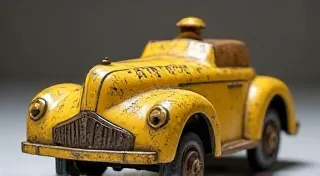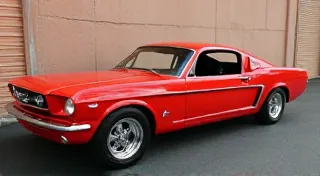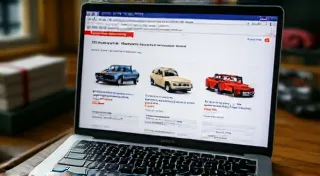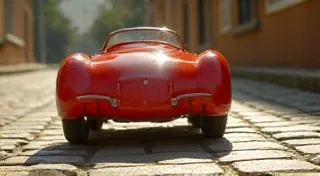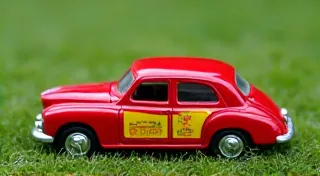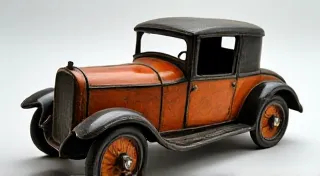Storage and Preservation Tips for Vintage Toy Cars
The thrill of collecting vintage toy cars often stems from more than just nostalgia; it’s about preserving history, artistry, and a tangible connection to the past. However, these cherished pieces are also vulnerable to the passage of time and environmental factors. Proper storage and preservation are crucial for maintaining their condition, protecting their value, and ensuring future generations can appreciate them. This guide will provide practical tips on how to safeguard your collection, focusing on the key threats and offering simple solutions.
Understanding the Enemies of Vintage Toy Cars
Before we dive into storage techniques, let’s identify the common culprits that degrade vintage toy cars. These aren't always dramatic events; often it’s a slow, cumulative effect that significantly impacts the toys’ value and appearance.
- Humidity: Perhaps the most pervasive threat, humidity can lead to rust on metal parts, paint deterioration, and warping of plastic components. High humidity fosters mold and mildew, which can stain and weaken materials.
- Sunlight (UV Radiation): Prolonged exposure to sunlight, particularly UV radiation, causes paint to fade, plastic to become brittle, and rubber to dry out and crack. Even seemingly minor exposure can cause significant damage over time.
- Temperature Fluctuations: Extreme temperature changes, especially rapid shifts, can cause materials to expand and contract, leading to cracking, warping, and loosening of parts.
- Dust and Dirt: While seemingly minor, accumulated dust and dirt can scratch paint and accelerate corrosion, particularly on metallic surfaces.
- Handling: The oils from our skin can damage paint and contribute to degradation. Repeated handling can also cause wear and tear on delicate parts.
- Pests: Insects and rodents can cause physical damage, particularly to cardboard packaging or components made from organic materials.
Optimal Storage Environments
Creating a controlled storage environment is the cornerstone of preservation. Here's a breakdown of ideal conditions and how to achieve them.
1. Location, Location, Location
The ideal storage location is a cool, dark, and stable environment. Avoid attics, basements, and garages – these are notorious for fluctuating temperatures and humidity. Here are some preferred locations:
- Interior Closet: A well-sealed closet, preferably on an interior wall, provides a relatively stable temperature and protection from direct sunlight.
- Spare Bedroom: If you have an unused bedroom, it can be converted into a dedicated toy car storage room.
- Storage Unit: Climate-controlled storage units are a viable option, but ensure they are truly climate-controlled and not merely insulated.
2. Temperature and Humidity Control
Target temperature ranges between 65-75°F (18-24°C) and relative humidity between 40-50%. While maintaining these exact numbers may be challenging, striving for this range is crucial.
- Dehumidifiers: If you live in a humid climate, a dehumidifier is essential. Choose a model with adjustable humidity settings.
- Humidifiers: In dry climates, a humidifier might be necessary to prevent materials from becoming overly brittle.
- Thermometers/Hygrometers: Regularly monitor temperature and humidity levels with a reliable thermometer/hygrometer.

3. Protection from Sunlight
Direct sunlight is a primary cause of paint fade and material degradation. Take these precautions:
- Window Coverings: If the storage area has windows, use blackout curtains or blinds to block out sunlight.
- UV-Protective Film: Apply UV-protective film to windows to further reduce UV radiation.
- Avoid Placement Near Windows: Never place toy cars directly in front of windows.
Safe Storage Practices: How to Organize Your Collection
Beyond the environmental controls, how you physically store your toy cars also plays a significant role in their preservation.
1. Acid-Free Materials are Key
Many common storage materials, like cardboard, contain acids that can damage toy car paint and metal over time. Always use acid-free materials:
- Acid-Free Boxes: Store individual toy cars in acid-free boxes. These are available from archival supply stores.
- Acid-Free Tissue Paper: Use acid-free tissue paper for wrapping delicate parts or protecting paint.
- Acid-Free Foam: For cushioning and support, use acid-free foam.
2. Handling with Care
Minimize handling as much as possible. When you do handle a toy car:
- Wear Clean Cotton Gloves: Cotton gloves prevent oils from your skin from transferring to the paint.
- Support the Car Properly: Always support the car from multiple points to avoid putting stress on any single area.
- Avoid Touching Paint: Minimize contact with the paint surface.
3. Safe Display Techniques (If Applicable)
If you choose to display some of your collection, take extra precautions:
- UV-Protective Display Cases: Use display cases with UV-protective glass or acrylic.
- Avoid Direct Sunlight: Keep display cases away from direct sunlight.
- Rotate Displayed Cars: Periodically rotate displayed cars with those in storage to minimize exposure to light and handling.
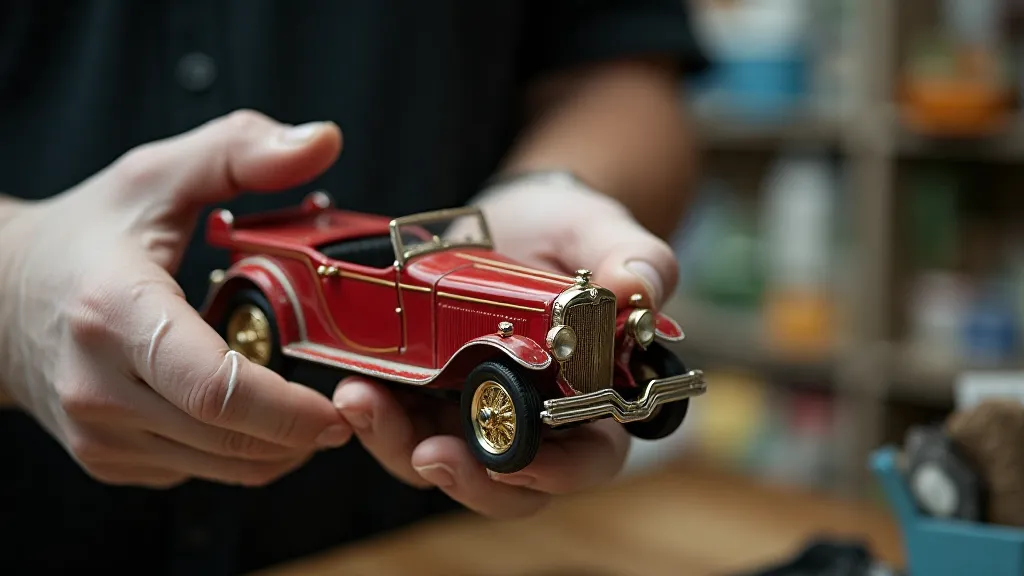
4. Dealing with Original Packaging
Original packaging significantly increases the value of vintage toy cars. Preserve it meticulously:
- Store Packaging Flat: Store boxes flat to prevent warping.
- Protect from Moisture: Keep packaging dry to prevent mold and mildew.
- Reinforce Weak Boxes: Reinforce weakened boxes with acid-free tape.
Regular Inspection and Maintenance
Preservation isn's a one-time task; it’s an ongoing commitment. Regularly inspect your collection for signs of damage or deterioration.
- Annual Inspection: Conduct an annual inspection to check for signs of rust, paint fading, or damage.
- Clean Carefully: If cleaning is necessary, use a soft, lint-free cloth and a mild soap solution. Rinse thoroughly and dry completely.
- Address Issues Promptly: Address any issues promptly to prevent them from worsening. For example, treat rust spots immediately.
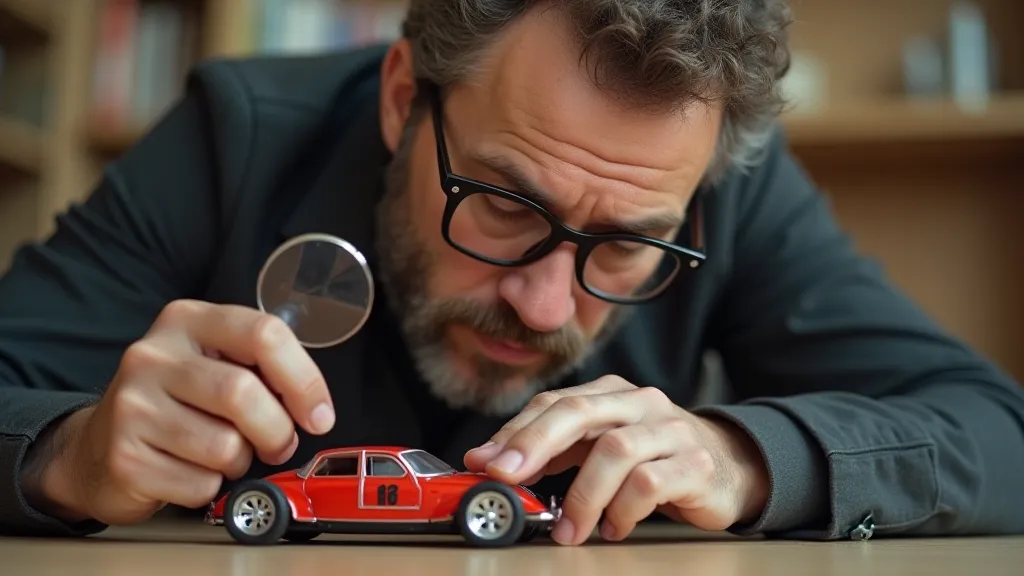
Conclusion
Protecting your vintage toy car collection requires a proactive and thoughtful approach. By understanding the threats and implementing the storage and preservation techniques outlined above, you can ensure your cherished pieces remain in excellent condition for generations to come. Remember that the effort you invest now will pay dividends in the long run, both in terms of preserving the value of your collection and in the joy of sharing it with others.
